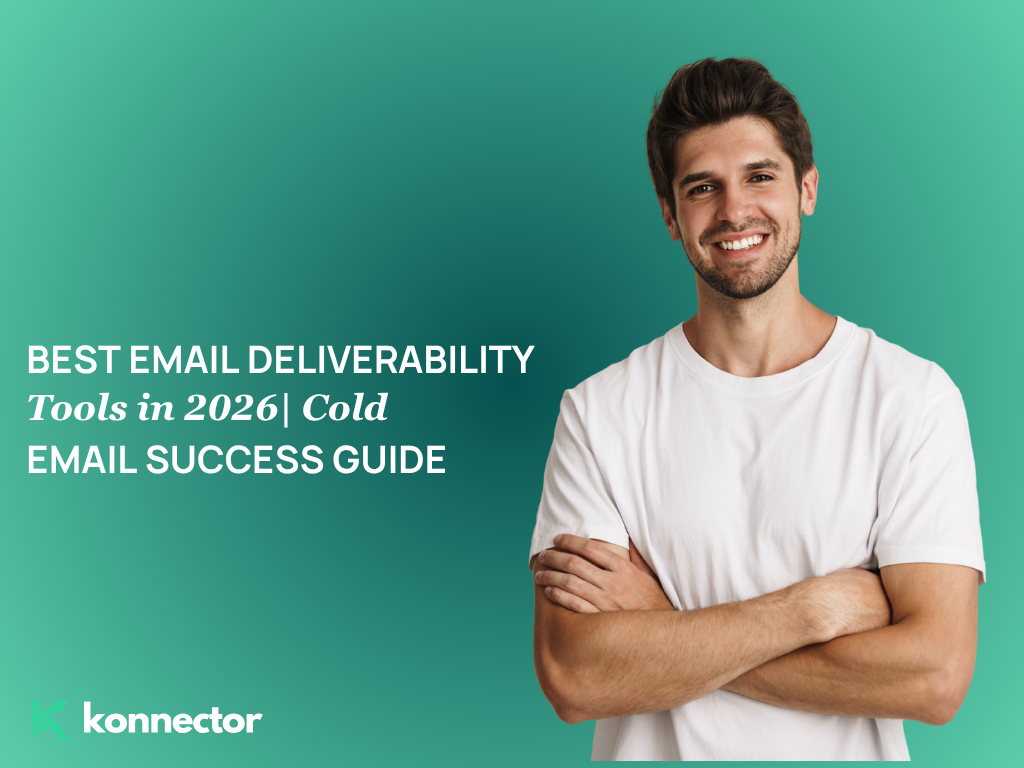The Express Outbound Playbook: Inboxes, Lists, and Messaging That Work Fast
You’ve seen the tweets and the DMs: “Can you launch a quick test for us before we sign?” Yes. We do it in 15 minutes—no kickoff call, no endless briefs—just a tight, repeatable system that validates whether your offer will land. This is our Express Outbound Playbook: the exact steps we run to spin up inboxes, refine a list, and drop AI-powered messaging that gets replies fast.
Why an Express Playbook?
Most teams stall between “we should do outbound” and “let’s actually ship it.” Our goal is to remove the friction so you can test fast, measure honestly, and decide quickly whether to scale. If it works in a day, it’ll work even better in a month—with deeper personalization and LinkedIn outreach plus LinkedIn automation layered on.
The 15-Minute Launch: What We Need
There are only three moving parts. Keep them simple, make them sharp.
- Inboxes: Pre-warmed and deliverability-safe. No cold domain purgatory, no spam folder drama.
- List: Enough volume to learn fast, with quick relevance filters to avoid spray-and-pray.
- Messaging: One high-context opener + AI enrichment that proves you did your homework.
Promise: This isn’t a “perfect” program—this is an express lane to validate fit before you invest in a full build.
Step 1: Inboxes (Pre-Warmed, Ready to Ship)
We start with infrastructure that already works.
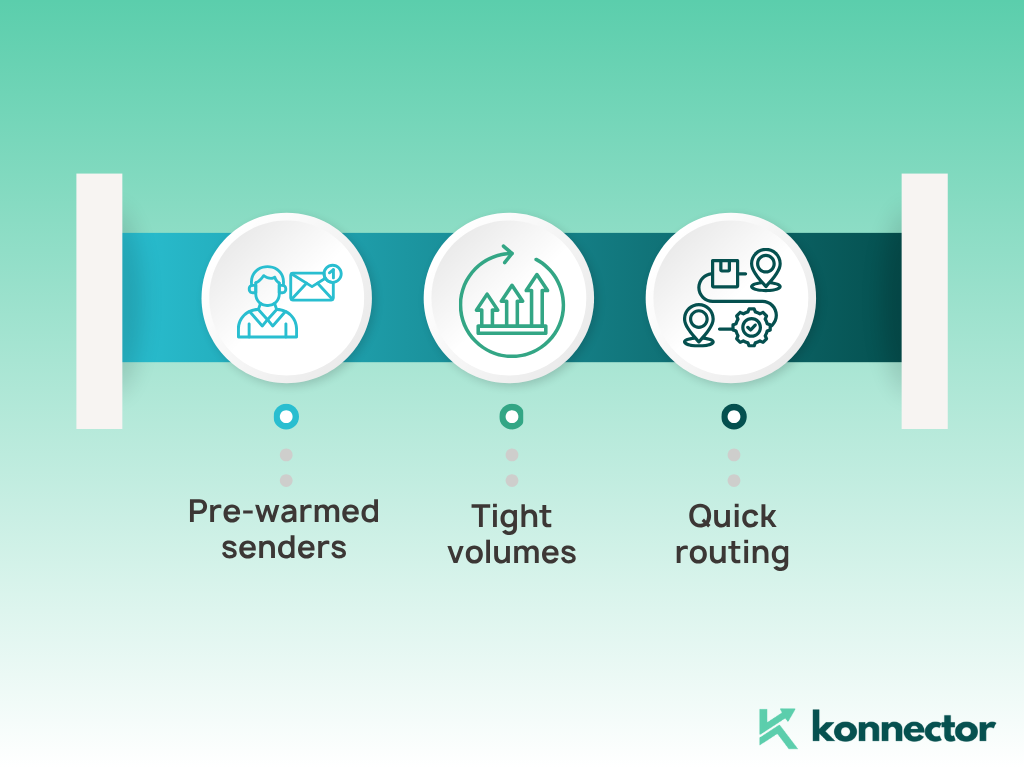
- Pre-warmed senders: Domains and mailboxes with healthy reputation so tests hit primary inbox.
- Tight volumes: Early sends are modest—quality over quantity to protect deliverability.
- Quick routing: Replies and OOO rules are set so you see signal in minutes, not days.
Goal: See if the offer resonates—don’t waste cycles debugging DNS and warmups.
Step 2: List (Volume to Learn, Relevance to Convert)
We help you take your rough ICP and make it test-ready in minutes.
- First filter: TAM > 100k. If your total addressable market is smaller than ~100k, fully automated outbound rarely scales predictably. We can still test—but manage expectations.
- Second filter: Easy relevance. Add one fast constraint that makes your list obviously smarter:
- By role keywords: e.g., marketers who mention “paid media.”
- By signals: hiring, tech used, geography, certifications.
- By niche: e.g., law firms that explicitly reference “employment law.”
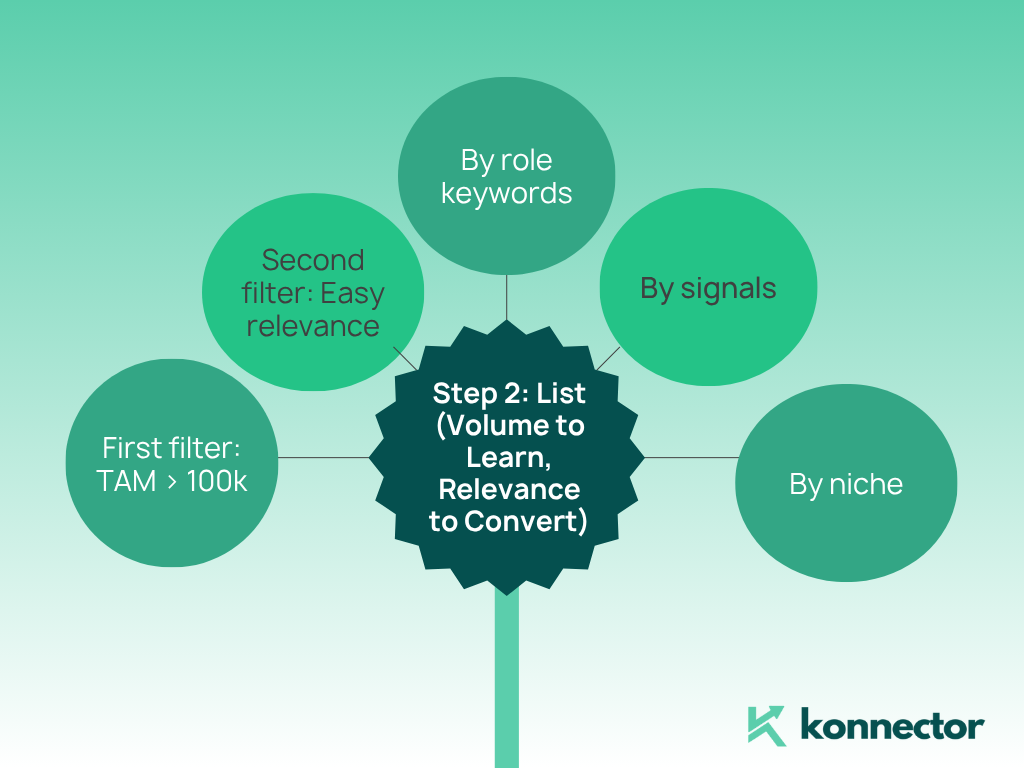
Why it works: One smart filter beats five generic attributes. Relevance compounds reply rates—fast.
Step 3: Messaging (One Line That Opens the Door)
Two objectives: feel relevant and qualify fast. We use AI to do both without bloating the email.
- The opener we’ve been loving:
Hey {{first_name}}, I know you get emails like this all the time but I had to reach out about how you help {{customer type}} do {{outcome}}.
- Then the AI assist: One tight paragraph that connects your value to something specific about them (site language, niche, tool stack, recent post).
- Qualify in the copy: We’ll auto-check a visible signal so we don’t waste their time or yours. Example: using Claygent to confirm med spas actually offer “micro-needling” before we pitch.
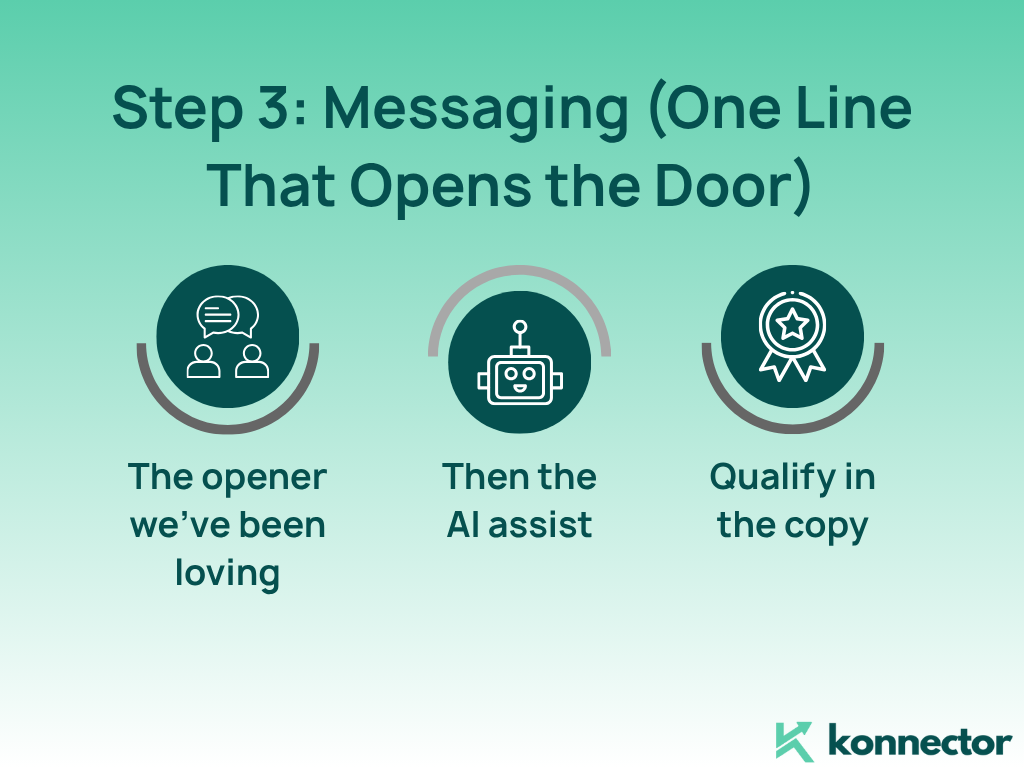
Hot take: People say “we get AI emails all the time.” They don’t get this: short, contextual, and provably relevant to their business.
The Two Questions That Make Emails Uncopyable
We borrow these from Jordan Crawford and bake them into every express test:
- 1) Can we add immediate value? A tiny alert, a quick diagnostic, a customer they should meet—something they’d thank you for even if they never buy.
- 2) What can we say that competitors can’t? Use proof, proprietary data, or a unique observation. If a competitor could send your exact email, rewrite it.
Example: The 15-Minute Build (Start to Send)
- Minute 0–3: Choose TAM segment (e.g., US med spas).
- Minute 3–6: Add one relevance filter (sites mentioning “micro-needling”).
- Minute 6–9: Drop the opener + AI paragraph that references their service page.
- Minute 9–12: Load pre-warmed inbox, set reply routing, cap at a safe first batch.
- Minute 12–15: Hit send, watch for the first replies, tag outcomes for iteration.
Read more—-> How to Add an Outbound Link to a LinkedIn Post?
Copy You Can Steal
Opener + Context
Hey {{first_name}}, I know you get emails like this all the time but I had to reach out about how you help {{customer type}} do {{outcome}}. Noticed you call out “{{keyword from site or post}}”—we’ve been helping teams like {{their peer or niche}} cut {{pain}} by {{specific metric}} without changing their stack.
Value Hook
If helpful, I can send a 2-bullet finder that flags {{problem/opportunity}} on your site in under 60 seconds.
Low-Friction CTA
Open to a 7-minute compare/contrast this week? Tue 11:30a or Thu 2p?
How We Add Signals in Minutes
This is an express playbook, not a research marathon. We use fast, reliable signals:
- Site keyword checks: Confirm they truly do the thing you solve (e.g., “employment law,” “wholesale,” “enterprise pricing”).
- Public footprint: Recent post, job description, or tech badge—one reference is enough to anchor relevance.
- Light enrichment: Claygent or a quick crawl to verify the offer is actually present before we pitch.
Read more—-> Why You Should Use a Separate Domain for Cold Email Outreach?
Where LinkedIn Outreach Fits
Email gets the first signal, LinkedIn outreach amplifies it. In the express lane we keep it simple:
- Profile view → connection request with a 7-word nod to their niche.
- Like + short comment → AI-assisted, human-sounding, not “Great post!”
- DM follow-up: A condensed version of the email with one question they can answer in a sentence.
With LinkedIn automation: Trigger this sequence off profile views and message opens—no manual chasing.
Success Criteria (What We Consider a “Win” in 24–48 Hours)
- Reply rate: 3–7% on the first micro-batch is a green light to iterate and scale.
- Quality of replies: “Not now, but this is interesting” beats silence—your relevance is working.
- Fast disqualifications: Clear “not a fit” signals mean your filters are honest. That’s progress.
Read more—-> How to Build an Effective B2B SaaS Sales process?
Common Pitfalls (And the Express Fix)
Even the fastest outbound campaigns can flop if you skip the fundamentals. When you’re running express tests, small missteps compound quickly — the wrong list, too many words, or a vague ask can kill reply rates overnight. Here are the most common traps teams fall into and how to fix them immediately.
- Too broad list: This is the number one campaign killer. “Marketers in the US” or “founders in SaaS” sounds fine — but it’s not focused enough to stand out. Add one clear relevance filter you can defend in one sentence.
Example: Instead of targeting all marketers, go for “B2B marketers who mention paid media in their LinkedIn headline.”
This single layer of specificity gives your AI messaging context and helps automation tools like Konnector.AI create targeted outreach that feels personal — even at scale.
- Overlong email: Long emails don’t feel “thorough,” they feel like work. Prospects scan inboxes in seconds — if your message takes more than one swipe on mobile, you’ve already lost them.
Express Fix: Keep every line doing something — opening, proving relevance, or inviting action. Ditch filler words, intros like “hope you’re well,” or product jargon. Aim for 4–6 lines total, max 90 words.
Bonus: shorter messages pair beautifully with LinkedIn outreach follow-ups. Use email to hook interest and LinkedIn automation to nurture it through short, conversational touches.
- Weak CTA: The fastest way to stall a reply is by ending with “let me know.” It sounds polite — but it forces the reader to do mental work: check their calendar, decide if it’s worth it, then maybe reply. Most won’t.
Express Fix: Offer two clear time slots or one low-friction artifact. For example: “Would Tuesday 3 PM or Thursday 10 AM work better?” or “Want a 2-bullet mini audit of your site?”
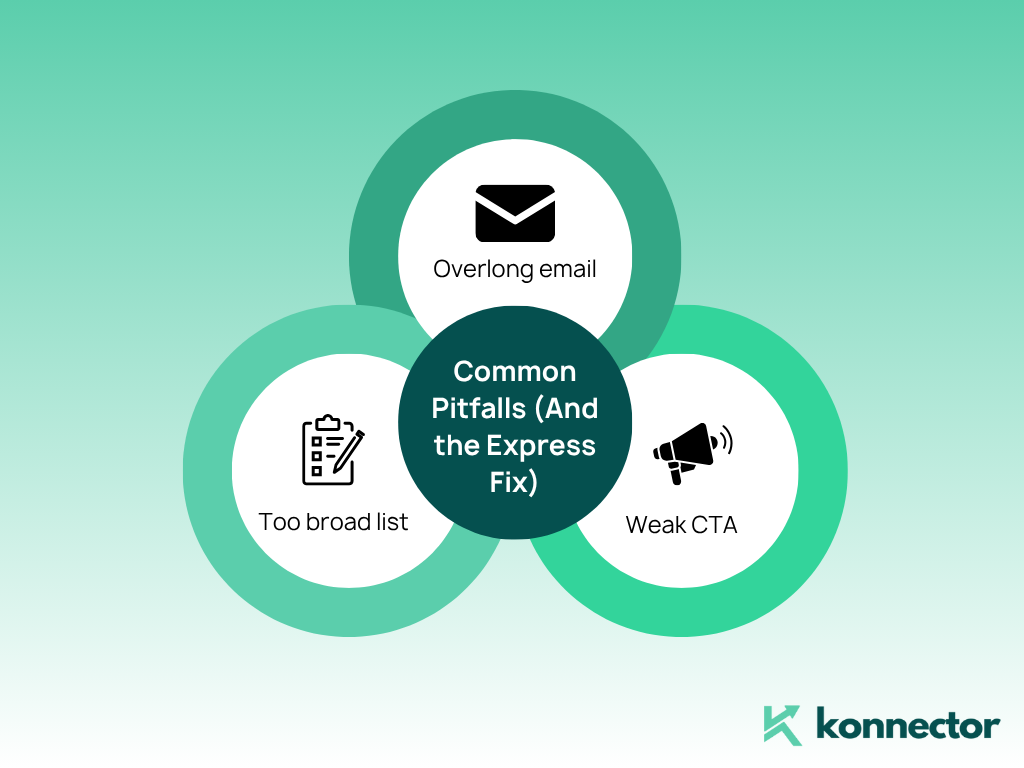
The easier it is to say yes, the faster you’ll fill the pipeline. Automate these CTAs in Konnector.AI so they appear dynamically based on the lead’s timezone or interaction history.
Bottom line: Keep it tight, targeted, and obvious. A smaller, smarter list + shorter copy + sharper CTA will always outperform volume and velocity.
Scaling the Winner
When the express test hits, we expand volume and depth without breaking the system:

- Personalization layers: Add a second signal (recent launch, location, tech stack).
- Channel sync: Mirror what worked in email inside LinkedIn outreach for compounding touches.
- Sequencing: Branch replies vs. non-replies; send a value artifact before the second ask.
Final Takeaway
You don’t need a 40-page playbook to learn whether your offer resonates. You need clean inboxes, a smart list, and one honest message that proves you did the work. Run the Express Outbound Playbook to validate in 15 minutes—then let LinkedIn automation and email scale what the market just told you is working.
Ship fast. Listen hard. Scale what responds.
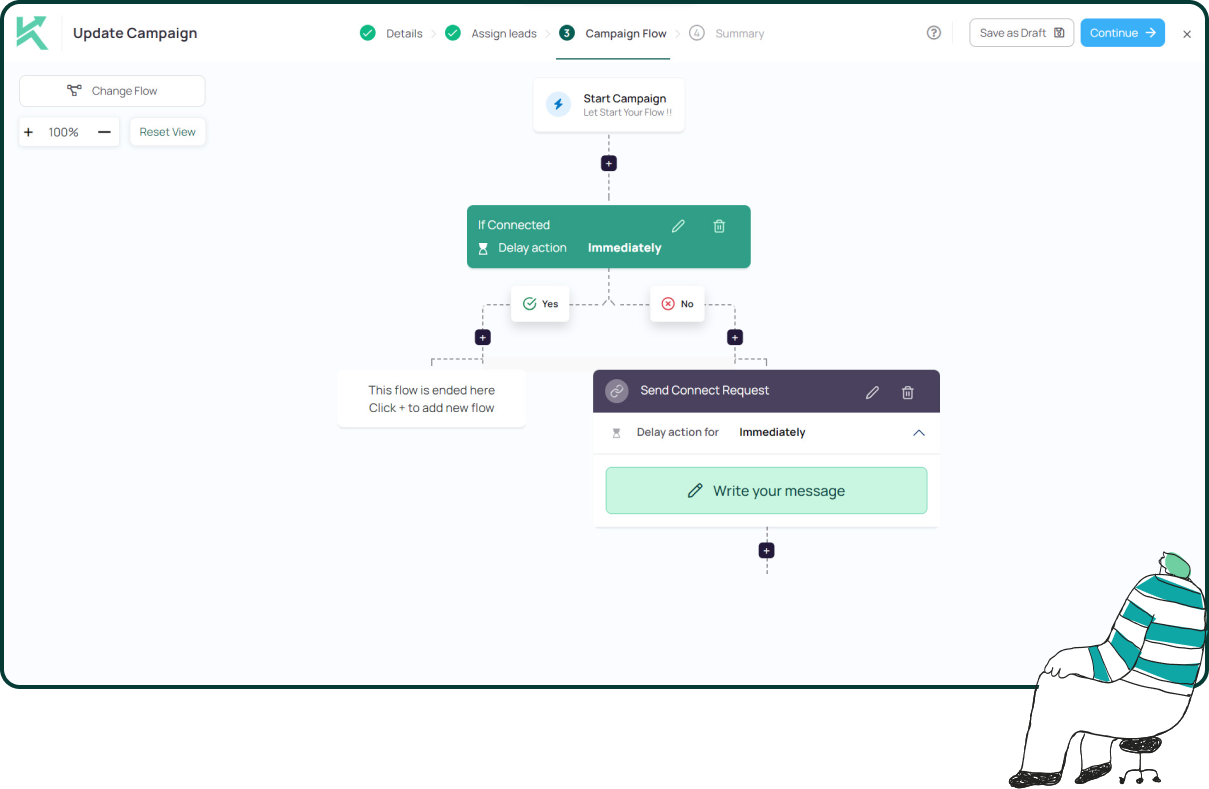
11x Your LinkedIn Outreach With
Automation and Gen AI
Harness the power of LinkedIn Automation and Gen AI to amplify your reach like never before. Engage thousands of leads weekly with AI-driven comments and targeted campaigns—all from one lead-gen powerhouse platform.
Frequently Asked Questions
It’s a rapid outbound campaign framework designed to validate offers and generate responses in just 15 minutes — using pre-warmed inboxes, refined lists, and AI-powered messaging.
It’s ideal for startups, agencies, or outbound teams that want to test new offers quickly without weeks of prep or customer onboarding.
Three things: inboxes, lists, and messaging. Each element is streamlined and partially automated for instant activation.
They’re already established and trusted, meaning your emails or LinkedIn outreach avoid spam filters and reach inboxes faster.
By checking if your Total Addressable Market (TAM) exceeds 100k people and then refining it with relevance filters — like role keywords or location.
AI personalizes intros, tailors the pitch, and ensures every email feels relevant — even at scale — using insights from tools like Claygent.
“Hey {{first_name}}, I know you get emails like this all the time, but I had to reach out about how you help {{customer type}} do {{something better}}...” followed by AI-generated insights.
Add unique value (a quick insight, alert, or automation), and say things competitors can’t say — that builds credibility.
Use LinkedIn outreach to mirror email messaging — engage leads via profile visits, DMs, or AI-written comments before sending follow-ups.
To test offers, validate messaging, and prove outbound ROI quickly — before scaling into larger, long-term campaigns.




